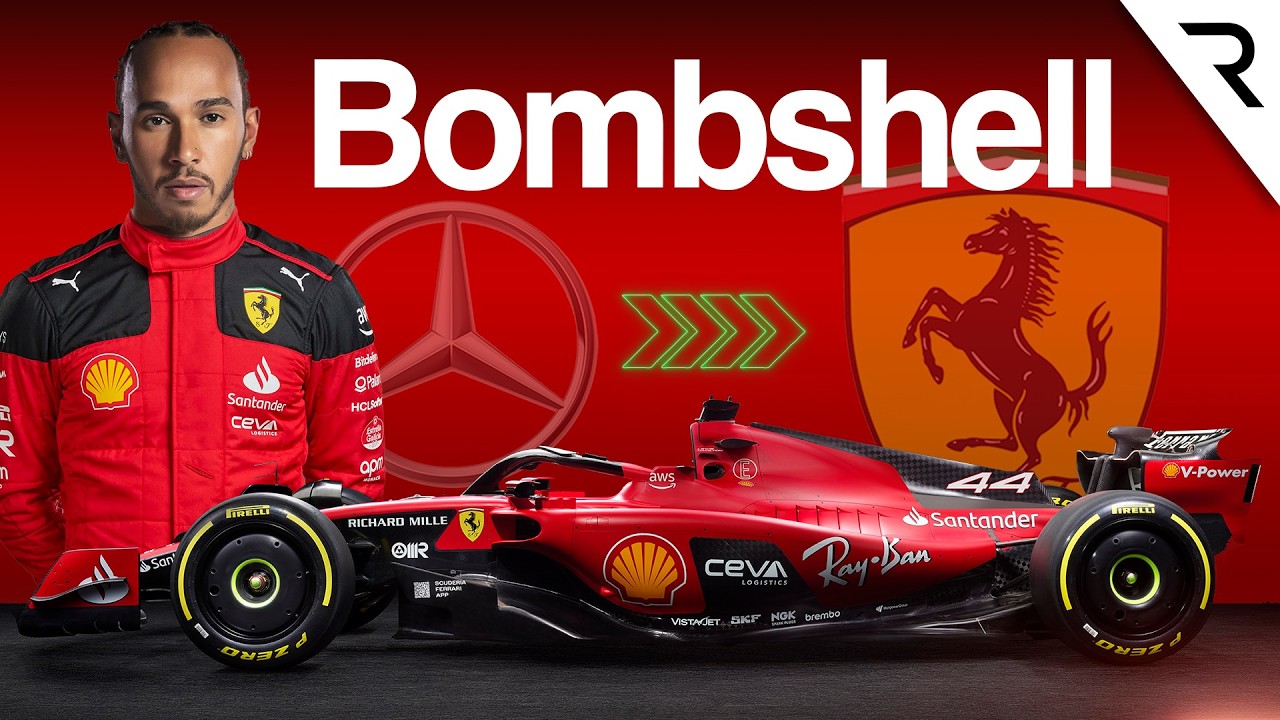
Aerodynamic Advantages: Ferrari to change these parts of F1 car to suit the seven-time world champion Lewis Hamilton’s demands for 2025
Hamilton’s new team will change their suspension layout to suit the seven-time world champion
Ferrari are set to change their suspension layout for their 2025 F1 car in order to suit Lewis Hamilton’s
preferences, ahead of the seven-time world champion’s arrival at the team following the 2024 Abu Dhabi Grand Prix.
In perhaps the biggest driver market shock since Nico Rosberg’s stunning retirement in 2016, Hamilton announced he would be leaving Mercedes for Ferrari at the end of 2024 on a multi-year deal which will reportedly run deep into retirement.
It brings a dream partnership for both the driver and the team based in Maranello, as well as creating a mouth-watering line-up with Charles Leclerc alongside the 105-time race winner as Carlos Sainz hops over to Williams.
In anticipation of his arrival, Ferrari are already beginning to switch their suspension layout for the 2025 F1 car with the aim of suiting both Hamilton and the Monegasque who like to brake late, but are also comfortable with loose rear-ends which is something Sainz is thought to dislike.

According to Formu1a.uno, the team will introduce a pull-rod front suspension to move in convention with the rest of the F1 grid, leaving Haas as the only team sporting a pull-rod rear concept from next year, as things stand.
Additional changes will also be made to the wheelbase to create a more “advanced” centre of pressure, suggesting the 2025 Ferrari will naturally favor oversteer as opposed to understeer, similar to the Red Bull philosophies of 2022 and 2023.
It will mean a new chassis too, Formu1a.uno writes, owed to the need for new suspension arms. It could also mean a change in the layout of the seating position, something Mercedes produced on Hamilton’s wishes for 2024.
Push rod vs pull rod: What are the benefits of the F1 suspension systems?
The push rod vs pull rod discussion roared to the front of F1 technical debates in 2022 when the sport shifted away from hydraulic tricks to absorb the characteristics of a circuit, but what are the benefits of each one?
It’s key to note that they aim to achieve the same thing. Both bid to keep as much of the car in contact with the ground as possible, whilst ensuring that the car remains stable and well-balanced to prevent unpredictability.
The push rod makes it far easier to access components such as the sprints and shock dampeners, but it comes at a cost as the rest of the surrounding elements have to be thicker to support the loads on the lighter push rod.

Pull rod offers a far superior weight distribution by locating the suspension lower to the ground, dropping the centre of gravity and offers a lighter suspension, but it is harder to access which can be problematic during free practice sessions.
Whilst the aerodynamic advantages of the pull and push rod concepts remained largely debated through 2022, it does seem that the pull rod has emerged as the victorious concept for the front of the cars as this is what most of the grid has converged to.
Particularly at the back of the car, which Ferrari are expected to change, the easier access from a push rod rear suspension could be beneficial for dialling out understeer if the rear turns out to be non-compliant during free practice.
This could also be influenced by the brake bias systems and ability to adjust the load on the front-wing for more front downforce, which is commonly called a “click” by driver and engineer, meaning it’s easier to make changes at the front of the car than the back.
Leave a Reply